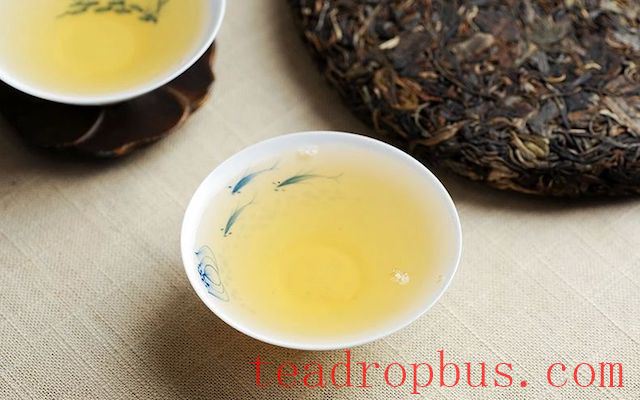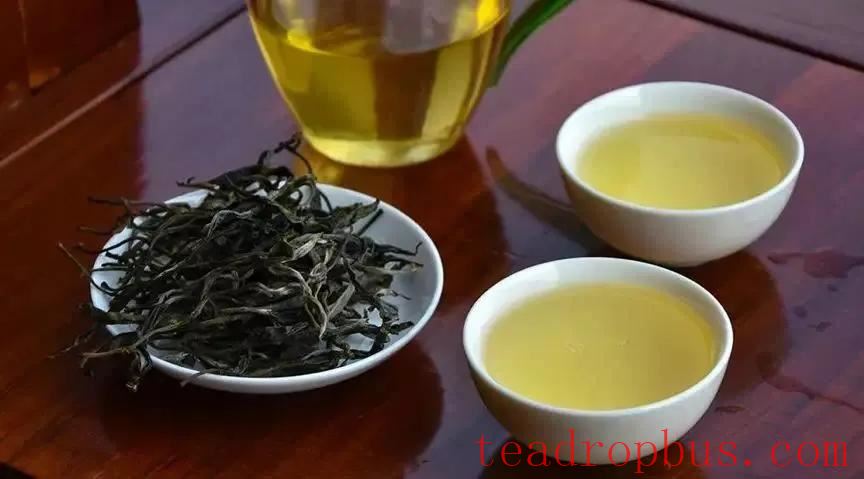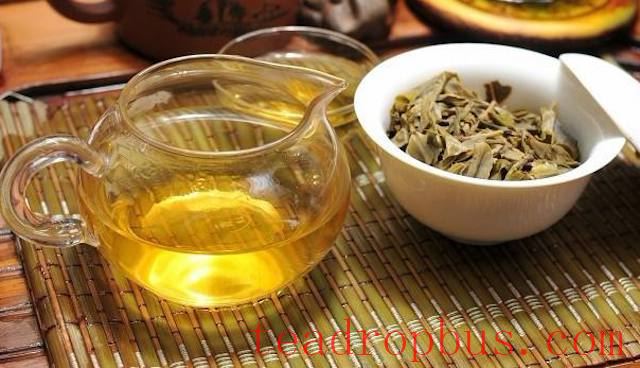Raw Pu'er tea is renowned worldwide for its unique flavor and benefits. To fully experience the charm of this tea, it's crucial to understand how to brew it correctly. Whether you're a newcomer to the art of tea or an experienced aficionado, this article provides detailed steps and tips to help you brew a perfect cup of raw Pu'er tea.

(Image source: network, delete upon request)
Preparation
Before starting to brew tea, you will need some basic tools:
- Gaiwan or Teapot
- Tea sea (fairness cup)
- Tea strainer
- Teaspoon or tea knife (for breaking apart tea cakes)
- Weighing tool (if precise measurement is needed)
These tools will help you better control the brewing process and ensure that each infusion reaches its optimal state.
Preparing the Tea Leaves
Raw Pu'er tea is usually compressed into tea cakes, so you'll need to carefully break off 5-7 grams of tea leaves using a tea knife or teaspoon. If you have loose tea, you can weigh it directly. For a gaiwan (110 ml), 7 grams of tea is recommended. If you use other tools, adjust the amount of tea based on capacity.

(Image source: network, delete upon request)
Brewing Steps
1. Warming the Utensils
Before brewing, warm your gaiwan, tea sea, and Teacups with hot water. This step not only cleans the utensils but also keeps them at a suitable temperature, which helps the tea release its aroma and flavor more effectively.
2. Washing the Tea
Place the broken tea leaves in the gaiwan, fill it with boiling water, cover it, and after a few seconds, discard the water. This step removes impurities and dust from the surface of the tea leaves and “awakens” them, allowing them to better unfold during actual brewing.
3. Formal Brewing
Refill with boiling water (approximately 90-100°C), cover, and steep for 3-5 seconds. Time control is very important; over-Steeping can make the tea bitter. Pour the tea into the tea sea and then distribute it among the teacups. You can adjust the steeping time according to your Taste preferences; if the tea is too light, slightly extend the time.
4. Multiple Infusions
Raw Pu'er tea can be infused multiple times, increasing the steeping time by a few seconds each time. Generally, raw Pu'er tea can be brewed 7-8 times, with different flavors emerging at each stage. Through multiple infusions, you can experience the subtle changes in the tea at different stages.
Water Quality and Temperature
The quality of water significantly affects the taste of Pu'er tea. It is recommended to use purified or filtered water. For younger raw Pu'er teas (under 3 years old), use lower temperature water (around 90°C) to reduce bitterness. For aged raw Pu'er teas, use near-boiling water (around 99-100°C) to fully extract the tea's flavors.

(Image source: network, delete upon request)
Enjoying the Tea
When pouring out each infusion, it's recommended to first smell the aroma and then savor the taste of the tea. The aroma of raw Pu'er tea is rich and varied, ranging from fresh floral notes to rich fruity aromas, with every sip potentially bringing new surprises.
Storage Recommendations
The storage of raw Pu'er tea is equally important. It should be kept in a dry, ventilated, odor-free environment away from direct sunlight. Appropriate storage conditions allow raw Pu'er tea to gradually transform over time, becoming richer and smoother.
Conclusion
Brewing a perfect cup of raw Pu'er tea requires not only skill but also patience and attention to detail. By mastering the correct brewing methods, you can fully experience the unique charm of raw Pu'er tea. Whether enjoyed alone or shared with friends, every cup is a delightful experience. May your every brewing session be filled with joy and discovery.